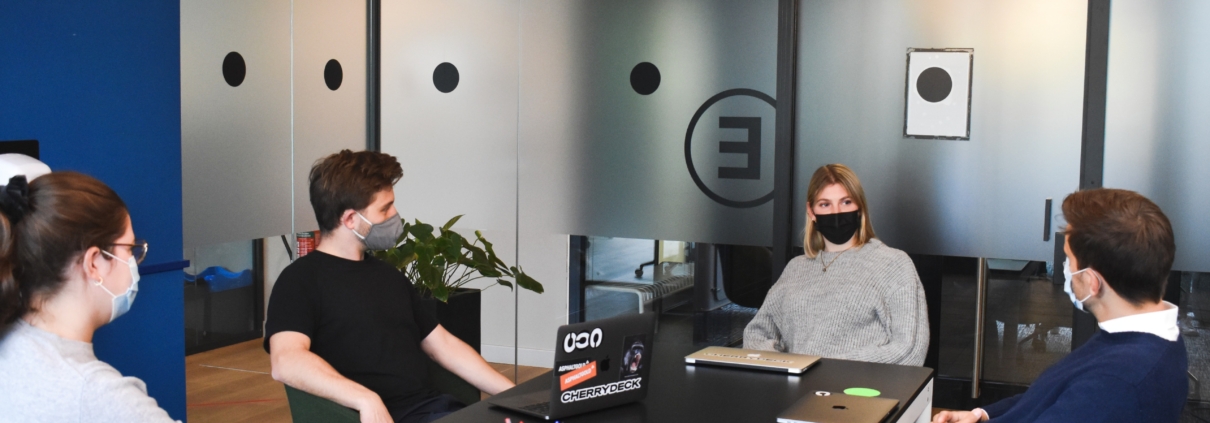How monitoring and managing office air quality protects your co-workers from the Coronavirus
There is a reason for the work from home (WFH) movement during the Coronavirus pandemic: COVID-19 is easily transmissible in closed indoor spaces full of people, such as offices. But this work arrangement is not sustainable, as there are certain jobs that require employees to be in the office. Here’s what can be done to protect your co-workers from the Coronavirus.
How is the Coronavirus transmitted?
Viruses like COVID-19 are spread in two ways: aerosols from infected individuals and contact with contaminated surfaces. Small respiratory droplets can get into your nose, mouth, or eyes through close contact with the infected person when he/she coughs, sneezes, speaks, sings, or breathes heavily. Aerosol transmission most often occurs in indoor, crowded, and poorly ventilated spaces where those who are infected spend long periods of time with others. These places could be restaurants, fitness clubs, offices, concert halls, nightclubs, auditoriums, or places of worship.
Surfaces and objects such as tables, doorknobs, and handrails can carry the Coronavirus after being sneezed on, coughed on, or touched by infected individuals. The virus can then be transmitted to you if you come in contact with these contaminated surfaces and touch your eyes, nose, or mouth with unwashed hands.
How can Coronavirus transmissions in the office be prevented?
The easiest way to protect your co-workers and yourself from contact transmission is to clean and disinfect frequently touched surfaces. These include door handles, toilets, faucets, light switches, touchscreen devices, keyboards, and desks. 70-90% alcohol or a mixture of bleach diluted with water can be used for surface disinfection.
Aerosol transmission is a lot more difficult to deal with. While wearing masks help in preventing the spread of droplets when one talks, breathes, or sneezes, the risk of transmission still exists in an enclosed office space. Hence, monitoring and managing air quality in the workplace is the only true solution. Because there is no method of measuring airborne Coronavirus particles, keeping track of carbon dioxide (CO2) levels is the next best thing. As the gas that is expelled by each and everyone one of us, during the pandemic, each exhale is potentially virus-laden.
Due to this implication, many governments have enacted regulations on the appropriate CO2 concentration level indoors to prevent the spread of COVID-19. The state of Washington recommended CO2 concentrations to below 450 ppm (parts per million) inside restaurants. The German Federal Office for Environment (UBA) and the SARS-CoV-2 worker protection regulation from the Federal Agency for Industrial Health and Safety (BaUA) set the recommended CO2 concentration level at below 1,000 ppm (parts per million) in office buildings.
At Breeze Technologies, we offer indoor air quality monitoring solutions to determine the air quality in your workplace. Our sensors have long measured for the major air pollutants found to be damaging to human health, carbon dioxide included. In fact, a link has even been found between COVID-19 mortality and air pollution, so you can consider this to be an extra layer of security for your workplace. The new Coronavirus prevention mode of our monitoring app provides current CO2 concentrations of the room where sensors are installed. The data is presented in an understandable visual format through a web application available on displays, tablets, and other devices. Users are notified in real-time on when to ventilate the space in order to lower CO2 levels, thus minimizing the risk of Coronavirus spread.
You can read more on how we calculate an indoor air quality index (AQI) to rate how polluted the air indoor is here, or read more about our solution to monitor indoor air quality and mitigate Coronavirus spread risk here. Contact us today to protect you and your workers from the Coronavirus!



 Banco Santander
Banco Santander